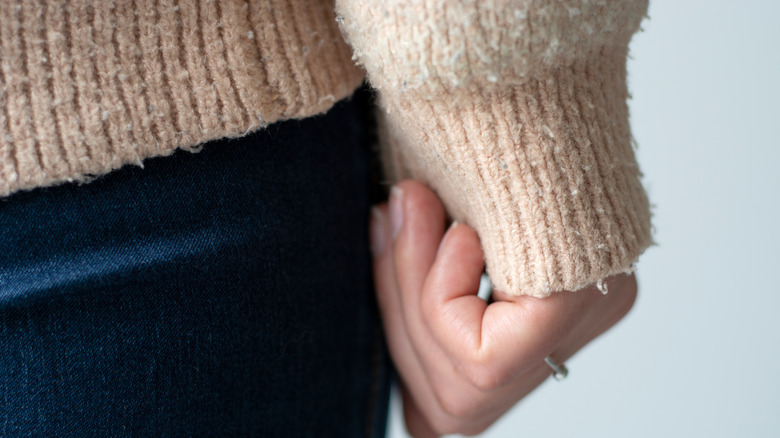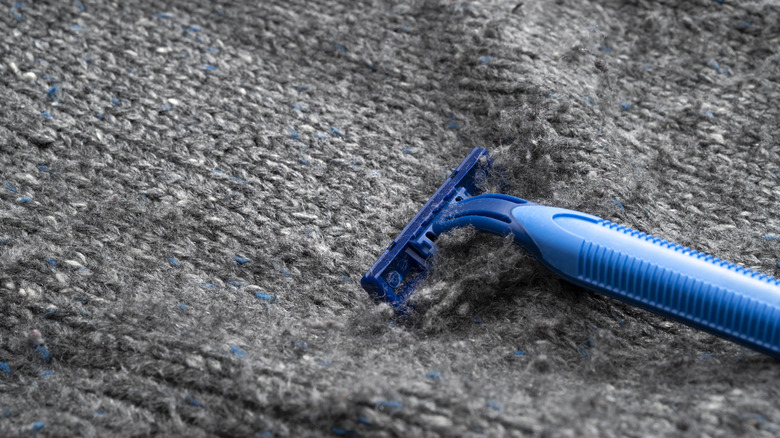Razors Can Double As Fabric De-Pillers To Save Your Favorite Sweaters
No one is a stranger to some fabric fuzz, also known as pills. According to Maytag, those lint balls are actually tiny twists of damaged fibers. All textiles are susceptible to fiber breakage, but it will happen most when the garment is made of a composite material with two or more different fibers. That often includes sweaters, coats, blankets — even jeans!
According to Mary Gagliardi, cleaning expert and in-house scientist for Clorox, fabric pilling is common and can happen with standard use and everyday wear. "When the fabric is rubbed against another portion of the garment or another surface, fibers are pulled from within the garment and combine to form a ball on the surface," she explained to Reader's Digest.
Even though some fuzz is expected, constant pilling might be a sign your garment is of lower quality. Gagliardi emphasizes the importance of production technique, sharing that long-fibered materials such as silk and linen are less prone to pilling because of the tighter yarn twist.
Use a razor to combat fabric fuzz
From fabric glue to using a hair straightener on wrinkles, quick clothing fixes are all over the web. Another common household item has found itself as a quick-fix hero as well – the razor. You very likely already own one, and if not, it's accessible and inexpensive to get. If you don't have a fabric shaver or you're not up for purchasing one, a disposable razor can de-pill your favorite sweater instead.
To remove lint balls from a piece of clothing, you don't necessarily need an electronic de-piller, per Reader's Digest. It will be just as effective to simply run a razor over the pilling patch to remove the fuzz. The blade shouldn't damage the fabric, but make sure to do it lightly, on a flat surface, and tighten the fabric by pulling to eliminate wrinkles before shaving. Also, it might sound obvious, but make sure you're using a bare razor and not one from your shower with built-in shave gel — you don't want to accidentally ruin your clothing with a stain or sticky mess!
Keeping your sweaters lint free
To avoid fabric pilling altogether, ensure you're taking care of your clothing items in the first place. Your favorite sweater might need a bit more love, which should be stated on the care label. Maytag advises always checking the tag before cleaning the item.
Although all instructions regarding washing and drying your clothes should be on the garment's label, there's probably more you should know. Using too much laundry detergent can cause more damage over time than you think, hurting your cherished pieces and your washing machine. Also, make sure to properly separate your laundry before washing it. Even though a label might say to wash an item with like colors, not all similarly colored clothes should get washed together. According to Whirlpool, it's important to also sort by fabric type to avoid heavier fabrics, like wool, damaging lighter ones, such as cotton.
Sometimes, items might not be machine washable, and you'll want to visit the dry cleaners. Still, make sure it's truly necessary because some fabrics don't handle the harsh chemicals used in dry cleaning very well, even though the care label instructs to dry clean only. Alternatively, you can try doing your dry cleaning at home to ensure no unwanted substances are used.


